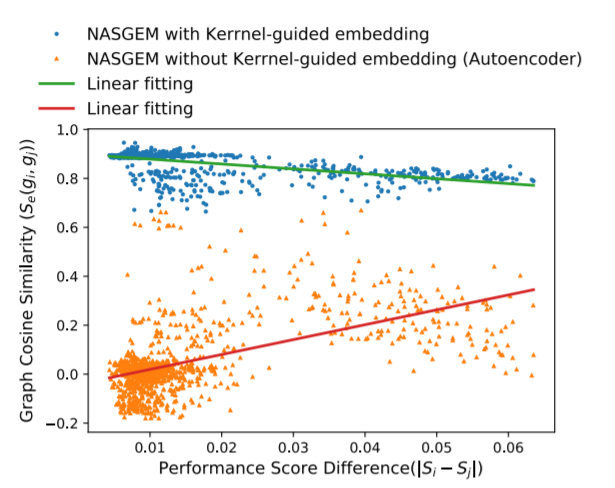NASGEM: Neural Architecture Search via Graph Embedding Method
PubDate: February 9, 2021
Teams: Duke University;Facebook;Tsinghua University;University of Nevada
Writers: Hsin-Pai Cheng, Tunhou Zhang, Yixing Zhang, Shiyu Liang, Feng Liang, Feng Yan, Meng Li, Vikas Chandra, Hai Li, Yiran Chen
PDF: NASGEM: Neural Architecture Search via Graph Embedding Method

Abstract
Neural Architecture Search (NAS) automates and prospers the design of neural networks. Estimator-based NAS has been proposed recently to model the relationship between architectures and their performance to enable scalable and flexible search. However, existing estimator-based methods encode the architecture into a latent space without considering graph similarity. Ignoring graph similarity in node-based search space may induce a large inconsistency between similar graphs and their distance in the continuous encoding space, leading to inaccurate encoding representation and/or reduced representation capacity that can yield sub-optimal search results. To preserve graph correlation information in encoding, we propose NASGEM which stands for Neural Architecture Search via Graph Embedding Method. NASGEM is driven by a novel graph embedding method equipped with similarity measures to capture the graph topology information. By precisely estimating the graph distance and using an auxiliary Weisfeiler-Lehman kernel to guide the encoding, NASGEM can utilize additional structural information to get more accurate graph representation to improve the search efficiency. GEMNet, a set of networks discovered by NASGEM, consistently outperforms networks crafted by existing search methods in classification tasks, i.e., with 0.4%-3.6% higher accuracy while having 11%- 21% fewer Multiply-Accumulates. We further transfer GEMNet for COCO object detection. In both one-stage and two- stage detectors, our GEMNet surpasses its manually-crafted and automatically-searched counterparts.



